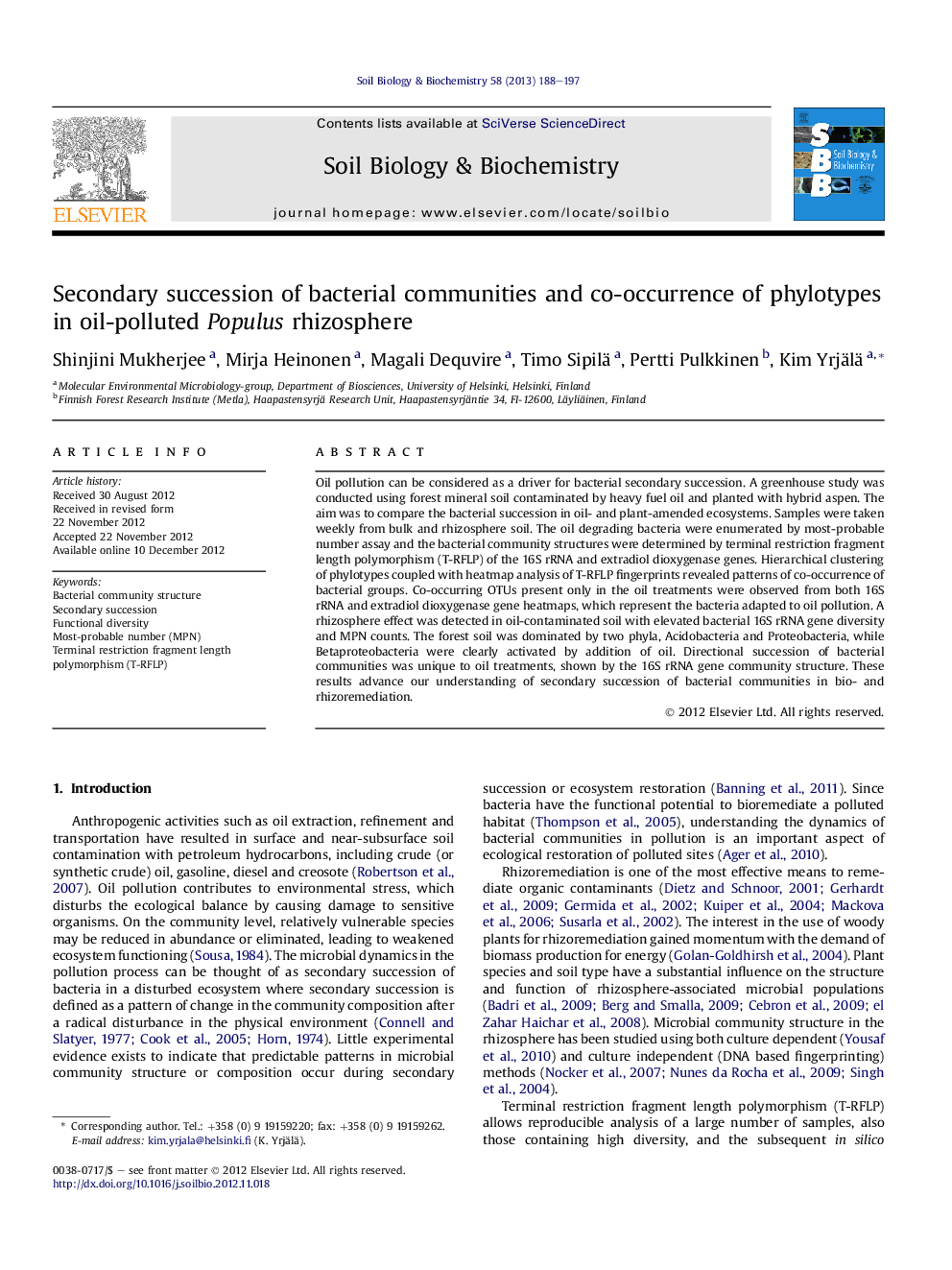| Article ID | Journal | Published Year | Pages | File Type |
|---|---|---|---|---|
| 2024886 | Soil Biology and Biochemistry | 2013 | 10 Pages |
Oil pollution can be considered as a driver for bacterial secondary succession. A greenhouse study was conducted using forest mineral soil contaminated by heavy fuel oil and planted with hybrid aspen. The aim was to compare the bacterial succession in oil- and plant-amended ecosystems. Samples were taken weekly from bulk and rhizosphere soil. The oil degrading bacteria were enumerated by most-probable number assay and the bacterial community structures were determined by terminal restriction fragment length polymorphism (T-RFLP) of the 16S rRNA and extradiol dioxygenase genes. Hierarchical clustering of phylotypes coupled with heatmap analysis of T-RFLP fingerprints revealed patterns of co-occurrence of bacterial groups. Co-occurring OTUs present only in the oil treatments were observed from both 16S rRNA and extradiol dioxygenase gene heatmaps, which represent the bacteria adapted to oil pollution. A rhizosphere effect was detected in oil-contaminated soil with elevated bacterial 16S rRNA gene diversity and MPN counts. The forest soil was dominated by two phyla, Acidobacteria and Proteobacteria, while Betaproteobacteria were clearly activated by addition of oil. Directional succession of bacterial communities was unique to oil treatments, shown by the 16S rRNA gene community structure. These results advance our understanding of secondary succession of bacterial communities in bio- and rhizoremediation.
► An abrupt decrease in the 16S rRNA and EDO gene diversity within a week of oil amendment. ► Directional changes in the 16S rRNA gene communities unique to oil treatments. ► Hierarchical clustering revealed co-occurring groups of bacteria in both 16S rRNA and EDO gene analyses. ► Betaproteobacterial groups appeared as specialists and Acidobacteria as generalists in oil pollution.
